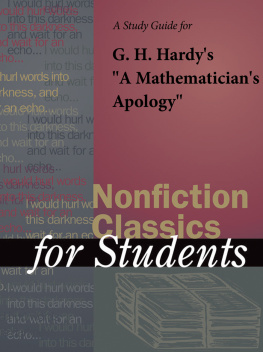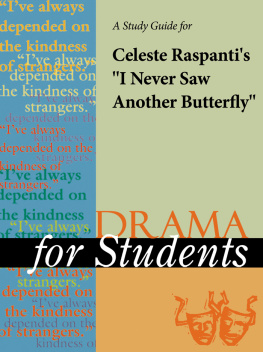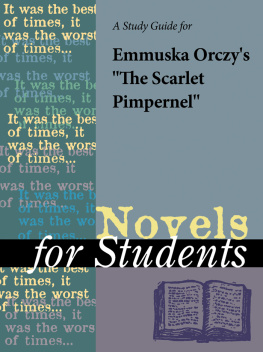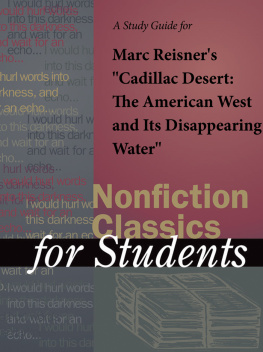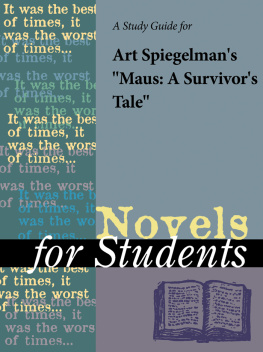TABLE OF CONTENTS
Guide
Nonfiction Classics for Students, Volume 5
Project Editor
David Galens
Editorial
Sara Constantakis, Anne Marie Hacht, Ira
Mark Milne, Pam Revitzer, Kathy Sauer,
Timothy J. Sisler, Jennifer Smith, Carol
Ullmann
Research
Michelle Campbell, Sarah Genik, Tamara Nott
Permissions
Lori Hines
Manufacturing
Stacy Melson
Imaging and Multimedia
Lezlie Light, Daniel William Newell, David G.
Oblender, Kelly A. Quin
Product Design
Pamela A. E. Galbreath
2003 by Gale. Gale is an imprint of Gale,
Inc., a division of Thomson Learning Inc.
Gale and Design and Thomson Learning
are trademarks used herein under license.
For more information, contact
Gale
27500 Drake Rd.
Farmington Hills, MI 48331-3535
Or you can visit our Internet site at
http://www.gale.com
ALL RIGHTS RESERVED
No part of this work covered by the copyright hereon may be reproduced or used in any form or by any meansgraphic, electronic, or mechanical, including photocopying, recording, taping, Web distribution, or information storage retrieval systemswithout the written permission of the publisher.
For permission to use material from this product, submit your request via Web at http://www.gale-edit.com/permissions, or you may download our Permissions Request form and submit your request by fax or mail to:
Permissions Department
Gale, Inc.
27500 Drake Rd.
Farmington Hills, MI 48331-3535
Permissions Hotline:
248-699-8006 or 800-877-4253, ext. 8006
Fax: 248-699-8074 or 800-762-4058
Since this page cannot legibly accommodate all copyright notices, the acknowledgments constitute an extension of the copyright notice.
While every effort has been made to ensure the reliability of the information presented in this publication, The Gale Group, Inc. does not guarantee the accuracy of the data contained herein. The Gale Group, Inc. accepts no payment for listing; and inclusion in the publication of any organization, agency, institution, publication, service, or individual does not imply endorsement of the editors or publisher. Errors brought to the attention of the publisher and verified to the satisfaction of the publisher will be corrected in future editions.
ISBN 0-7876-6034-5
ISSN 1533-7561
Printed in the United States of America
10 9 8 7 6 5 4 3 2 1
A Mathematician's Apology
G. H. Hardy
1940
Introduction
Godfrey Harold (G. H.) Hardy's A Mathematician's Apology, first published in 1940 in England, is the memoir of the world-renowned mathematician, written in the last few years of his life while he was in failing health. The work is written in the form of an apology, which in literary terms means a defense. In this case, Hardy is defending his career as a theoretical mathematician. To make the defense comprehensible to the layperson, Hardy discards the language he would use in an academic paper and instead adopts a succinct and simple writing style aimed at a general audience. The book is not mathematical; rather, it is an affirmation of a career that happens to be mathematical and purely speculative.
It should be noted that Hardy speaks exclusively of men in his writing, which reflects the secondary role women of his era played in the British university system in general and in the field of mathematics in particular. Hardy does not mention or refer to a single woman intellectual or a work by a woman.
A Mathematician's Apology is a lasting testament to Hardy's passion for intellectual pursuits. Hardy likens mathematics to art and explains math in much the same way a critic explains art. He elaborates on the qualities of mathematical genius and the logical reasons for pursuing a career in mathematics, and he briefly outlines three of the most basic and timeless theorems in order to illustrate the inherent beauty of mathematics for the layperson. Many of the chapters also address thedifferences between theoretical or "pure" mathematicsto which Hardy dedicated his lifeand several types of "applied math," which he regards as largely inferior. The work also reveals the grave doubts Hardy harbored about the overall usefulness of his work and life. While A Mathematician's Apology has had an enormous influence on generations of mathematicians, it has also been viewed by many as a psychological document of a genius with depressive tendencies. As Hardy contemporary C. P. Snow acknowledges in the book's introduction, A Mathematician's Apology "is a book of haunting sadness."
Author Biography
Godfrey Harold (G. H.) Hardy was born on February 7, 1877, in Cranleigh, Surrey, England. Both his parents were educators and possessed mathematical skills. Even before learning to speak as a very young child, he demonstrated an extraordinary IQ and performed mathematical computations to amuse himself. After winning a scholarship to Winchester College in 1889, Hardy began the rigorous training of a mathematician.
In 1896, he entered Trinity College, Cambridge, where he trained under A. E. H. Love, who gave him his first serious conception of analysis by introducing him to Camille Jordan's Cours d'analyse. Thereafter, Hardy committed his life to mathematics, and by 1908 he had already made a significant contribution, with his greatest work in this early period being A Course of Pure Mathematics.
A watershed year for Hardy was 1911, as it marked the beginning of his thirty-five-year collaboration with fellow mathematician J. E. Littlewood. Two years later, in 1913, he received an unsolicited manuscript from Indian mathematician Srinivasa Ramanujan. Hardy immediately spotted Ramanujan's genius and brought him to Cambridge where, between 1914 and 1918, the men engaged in what would become one of mathematics' most remarkable collaborations.
It was during the years of World War I that Hardy also became known for his outspoken political views. Unlike most of his contemporaries and colleagues, Hardy held the Germans in high regard for their intellectual prowess and contributions to scientific thought. His ingrained distrust of British politicians contributed to his deep anger at Great Britain's participation in the war. He was particularly upset over the interruption it caused in his various collaborations with colleagues outside England.
In 1919, Hardy left Cambridge for a position as the Savilian professor of geometry at Oxford, where he remained until 1931, at which time he returned to Cambridge, where he finished his professional career. An avid cricket fan and tennis player, Hardy remained physically active throughout his life until 1939 when, at the age of sixty-two, he had a heart attack. His remarkable mental powers quickly began to leave him and sports became impossible. He was also filled with anger that Europe had again entered into war. However, Hardy had one further gift to leave to the world, namely A Mathematician's Apology, published in 1940, which has inspired many people towards mathematics.
By the time World War II ended in 1945, Hardy's health was failing fast, as was his creativity. He gradually became depressed, and in early summer 1947, he unsuccessfully tried to take his own life by taking a large dose of barbiturates. He took so many, however, that he became sick before he died, and he was resuscitated and survived.

